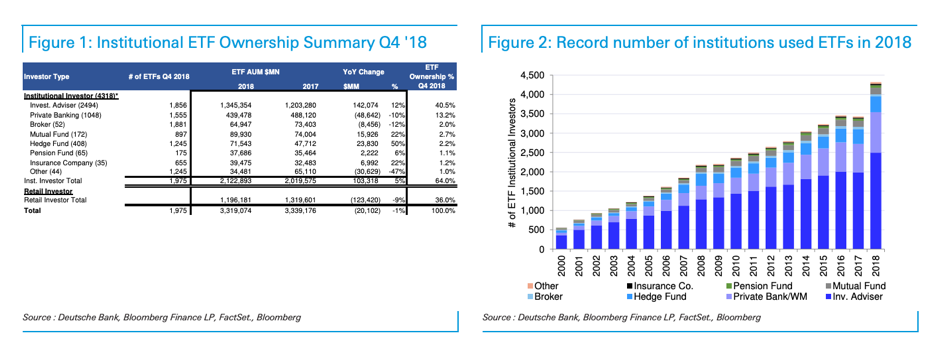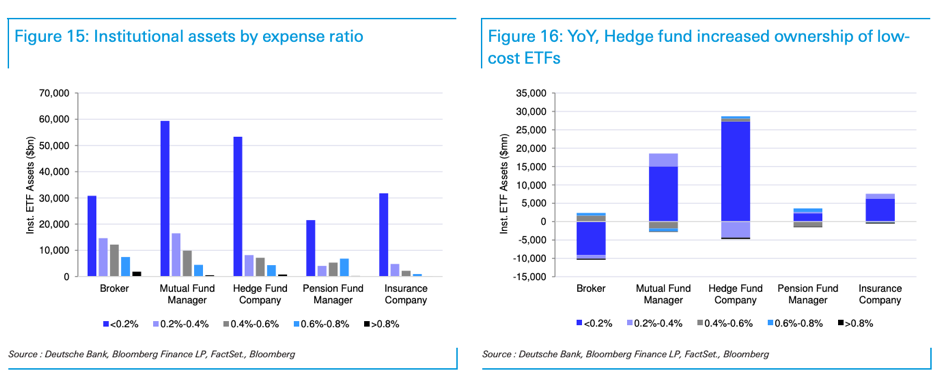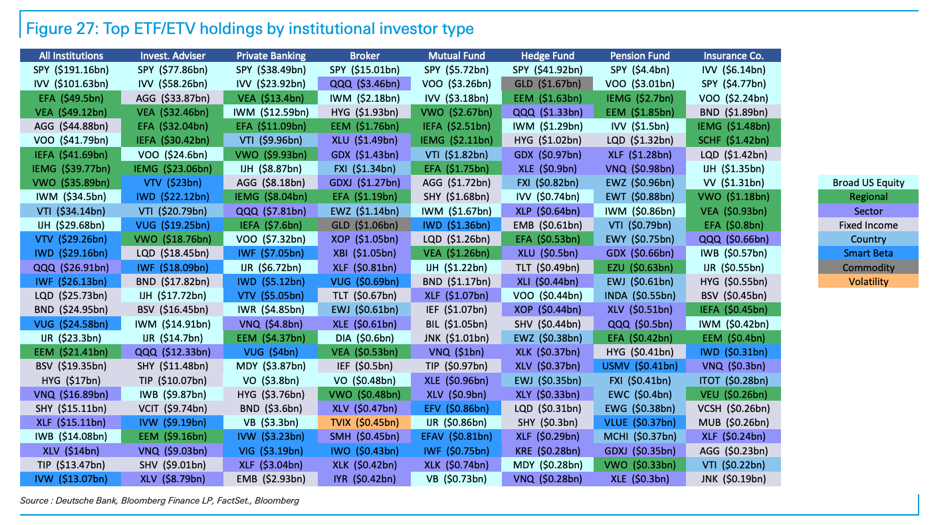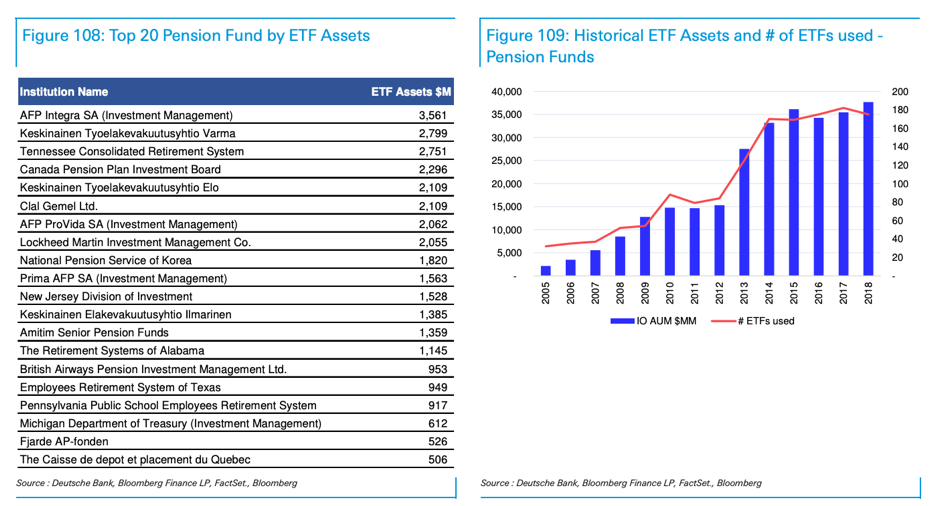Deutsche Bank's 62-page study on how institutional investors are using ETFs was published last week. Below are our five take-aways.
#1. Institutions – especially advisers – now control two-thirds of ETF assets
Two thirds of the US ETF market is controlled by institutions, or $2.1 trillion worth, representing a 4x increase in institutional use over the past 5 years. In 2018 alone, almost 900 new institutional investors used ETFs, the largest jump on record.

Institutional uptake owes mostly to advisers. US-based advisers have changed fee models in recent years, away from trailing commissions, which aligned their interests with asset managers, and towards direct fees charged to investors. The shift has helped ETFs in the US enormously, the data suggests. While advisers are driving institutional ETF use, hedge funds, mutual funds, pension funds and insurers were all increasing their uptake too.
#2. Bank of America, kingmaker?
On paper, the industry kingmakers are the biggest banks and their broker-dealer and investment manager affiliates. Bank of America and its subsidiaries, Managed Account Advisors, for managed accounts, and MLPFS, the broker-dealer, took three of the top four spots.

#3. Get cheap or go home
Cost is key in determining institutional allocations, with 64% of institutional flows going to funds with fees of 20 basis points or less. Fee-based advisers tend to be most fee conscious of all due to the fact that they are - effectively - invested with their clients. But it’s not only advisers who are fee conscious. Mutual funds, insurance companies and hedge funds are equally in favour of low-cost products.

#4. Everyone’s favourite is SPY, except insurers.
SPY was the favourite ETF among all categories of institutional investor, except insurers, who preferred BlackRock’s competitor S&P 500 tracker IVV. The favourites of hedge funds were all highly liquid funds that track popular benchmarks. This likely owes to hedge funds using ETFs for tactical long/short exposure, the report said. Brokers were also slightly different. They tended to prefer sector trackers to broad-based benchmarks. Interestingly brokers are also quite taken with the VIX tracker TVIX. Private wealth, pension funds, mutual funds and advisers all tilted strongly towards low cost beta products.

5#. Pension funds still don’t use ETFs
Pension funds have always been the final frontier for the ETF industry. Historically, pension funds have preferred open-ended index funds to ETFs. this is because they don’t need the intraday liquidity, don’t need exotic indexes. And don’t want to pay to get in and out via spreads/premiums liquidity providers charge to get you into ETFs. And by the looks of things they’re staying that way, with pension assets in ETFs mostly unchanged since 2014.




